
This post may contain affiliate links and I may earn a small commission when you click on the links at no additional cost to you. You can read my full privacy policy here.
Planning a trip to Seoul but not sure where to start? Seoul is huge with so much to do, so planning your perfect trip can be intimidating. Luckily, as a 3-year resident, I’ve put together the ultimate Seoul itinerary for exploring this sprawling city in a week or less. From bustling markets and historic palaces to trendy neighborhoods and delicious street food, this itinerary covers all the must-see spots and hidden gems that make Seoul so special. Get ready to experience the best of South Korea’s capital like a true insider!
Seoul Itinerary: FAQs
How many days do I need in Seoul?
I recommend spending at least 3 days in Seoul but preferably a week. You can see most of the best things to do in Seoul in just a few days, but I highly recommend allotting time for day trips such as the DMZ and other unique areas in Seoul’s vicinity. With this Seoul itinerary, a week is ideal so you can spend four days exploring the city and take three day trips. Read more on the best day trips from Seoul here.
How to book the best hotels in Seoul?
The best booking platform for finding and reserving great hotels in Korea is Agoda. It’s owned by the same company as Booking.com but is based in Asia, making it great for finding any hotels you need. If you’re a backpacker staying in hostels, then Hostelworld is consistently the best hostel booking platform worldwide, and Seoul is no exception. Book your Seoul accommodation on Agoda today:
Don’t want to search for the best option, or just don’t have time? That’s what I’m here for! As a professional travel advisor, I’ve vetted or personally stayed at the suggested properties below.
Where should I stay in Seoul?
Seoul is a huge city, so it’s best to prioritize staying in an area that is not only exciting but also well-connected to the rest of the city. For this Seoul itinerary, I recommend staying in Myeongdong, Hongdae, or Insadong. Each of these neighborhoods has something to offer every traveler, including entertainment, street food, shopping, cultural sites, and convenient locations.
For more on why to choose one of these neighborhoods, check out my local’s guide to where to stay in Seoul.
Here’s a quick overview:
| Seoul neighborhood | Why stay in this neighborhood? | Best affordable hotel |
| Myeongdong | Shopping, street food, good location | Philstay Myeongdong Station |
| Hongdae | Nightlife, shopping, budget | Nabi Hostel Hongdae |
| Insadong | Culture, history | Grid Inn |
How to book the best activities and excursions in Seoul?
The best activity and excursion booking platforms for Korea are Klook and GetYourGuide. Both websites have thousands of trustworthy travel experiences with verified user reviews. I use Klook and GetYourGuide to book almost all my excursions in Asia, and you’ll find links throughout the article to great experiences I’ve personally vetted or experienced myself.
How can I get around Seoul?
Seoul is extremely well-connected by public transportation, with an extensive subway and bus system that can get you anywhere. You will need to head to a convenience store first, such as 7/11 or CU, to buy a T-Money card, which can be used to pay for both buses and the subway. You can refill these cards at a ticketing kiosk at any station. The ticketing kiosks have an English setting that makes it an easy process. Be sure to carry cash, as you can only fill up your transportation card using cash. When you ride on the bus or subway, you will swipe this card upon both entering and exiting.
Apple Maps and Google Maps do not work well in Korea. You will want to download Naver Maps and Kakao Maps for accurate directions.
Taxis are also decently cheap, which you can call through the Kakao Taxi app.
When should I go to Seoul?
The best time to visit Seoul is in the spring or fall, from March to June and September to November. This Seoul itinerary works best during this period, but can be used year-round. This is when weather patterns are most desirable, not too hot and not too cold, with low rainfall. April is often considered the best month to visit, with cherry blossoms blooming across the country. However, it can be hard to plan a trip based on blooming predictions. Some years it’s early, some it’s late, some it’s right on time. But even if you miss the perfect timing, April is still a great month to visit overall, with enjoyable weather and clear skies.
I’d recommend against visiting in July and August when the weather is hot and humid and monsoon season descends on the peninsula. I’d also recommend against the peak of winter, which can get unpleasantly cold.
Here’s an overview of the weather in Seoul:
| Season | Average high temperature (°F) | Average low temperature (°F) | Average rainfall (in) |
| Spring (March – June) | 54-68 | 37-52 | 2.6-4.9 |
| Summer (June – September) | 77-84 | 64-73 | 9.4-14.6 |
| Fall (September – November) | 57-72 | 39-54 | 1.7-5.7 |
| Winter (November – March) | 34-43 | 18-27 | 0.9-1.3 |
Each season brings unique experiences to Seoul, from seasonal sports and activities to changing landscapes and annual festivals. Check out my South Korea seasonal guides: spring in Korea, summer in Korea, and winter in Korea.
Where else should I go in Korea, other than Seoul?
If you have a week or more in Korea, you should definitely venture beyond Seoul! There are so many options, but Busan, Jeju, and Gyeongju are the best if you’re short on time.
Have 2 weeks to spend in Korea? Check out my South Korea itinerary, including a week in Seoul, a few days in Jeju, and a few days in Busan and/or Gyeongju.
Is Seoul good for solo female travelers?
Yes, Seoul is very safe for solo female travelers and this Seoul itinerary works well for women traveling alone. Most people are polite and keep to themselves, and crime rates are low. Also, you will see women walking around alone all the time, even at night! As long as you practice standard safety measures, as you always should, Seoul (and Korea as a whole!) is an ideal destination for a solo female traveler. I’ve traveled around Seoul alone for years, so this itinerary is curated with solo female travelers in mind.
While there aren’t any outstanding safety concerns as a solo traveler in Korea, be mentally prepared that being alone isn’t the norm. If you sit down to eat alone at a restaurant, you will probably be the only one eating alone. Plus, lots of Korean meals are meant to be shared, meaning they’ll come in portions for multiple people. And as you travel around the country, you will notice that most Koreans don’t hang out alone. There will be lots of couples, friend groups, and families everywhere you go, but few individuals. I’ve gotten used to this over the years so it doesn’t bother me much anymore, but it’s something to be aware of before you visit.
Don’t let these factors discourage you! After solo traveling around Korea for three years, I put together my South Korea Solo Travel Guide, including safety, tips, and what to expect, to set you up for success as a solo traveler in Korea. In fact, Seoul is one of my top picks for the best places to solo female travel in Asia!
Seoul Itinerary: Day One
Gyeongbokgung or Changdeokgung Palace
COST: ₩3000 or free with hanbok rental, additional ₩5000 for the Secret Garden
What better place to start your Seoul adventure than at one of Korea’s iconic royal palaces? Gyeongbokgung is the primary palace of the five royal palaces in Seoul. It was built in 1395 in the Joseon Dynasty, serving as the home of the royal family and the seat of government. It’s Seoul’s largest and most impressive palace, with halls, gates, pavilions, gardens, and more to explore. Next to Gyeongbokgung is Changdeokgung, the secondary palace. While it’s not as big as Gyeongbokgung, it’s known for its Secret Garden. The garden served as a rest area for the royal family members and was touched by human hands only when necessary.
You don’t need to visit both Gyeongbokgung and Changdeokgung if you’re short on time. Instead, I’d choose which one you’re more interested in – a more impressive palace and grounds (Gyeongbokgung) or the unique Secret Garden (Chandeokgung). Book the Secret Garden in advance here as it often sells out! Tickets go on sale 6 days in advance.

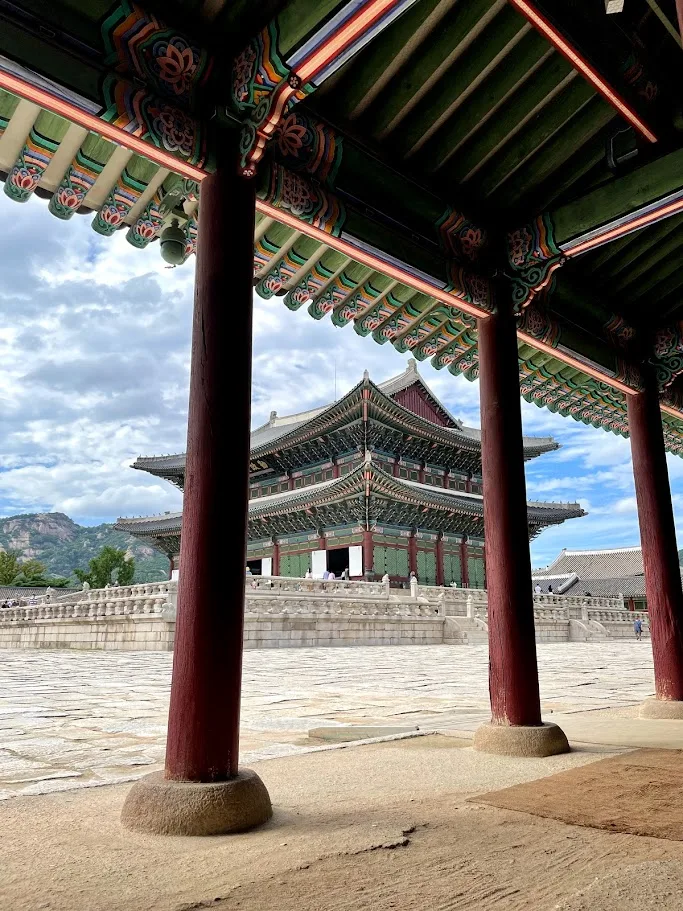
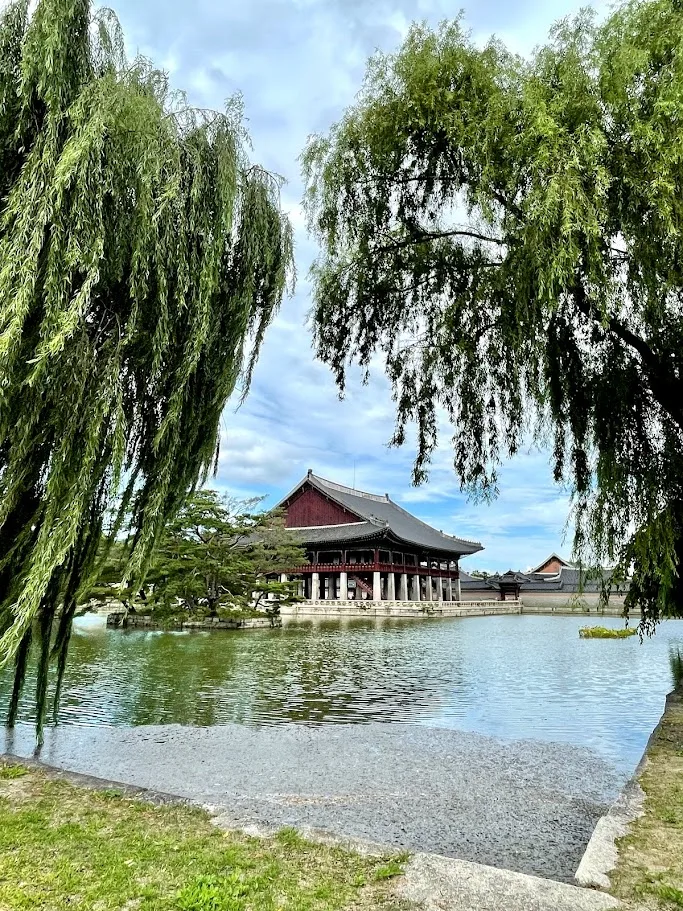
Bukchon Hanok Village
COST: free
Just a short ride or walk away is Bukchon Hanok Village, a neighborhood of over 900 traditional Korean homes called “hanok” that date back to the Joseon Dynasty. There are many cultural centers, cafes, restaurants, tea houses, and guesthouses that allow visitors to immerse themselves in traditional Korean culture. It’s a nice place to stroll and get great city views, although you should be prepared for some steep hills. Keep in mind that it’s an actual neighborhood with people’s homes, so please be mindful to be quiet for the residents.
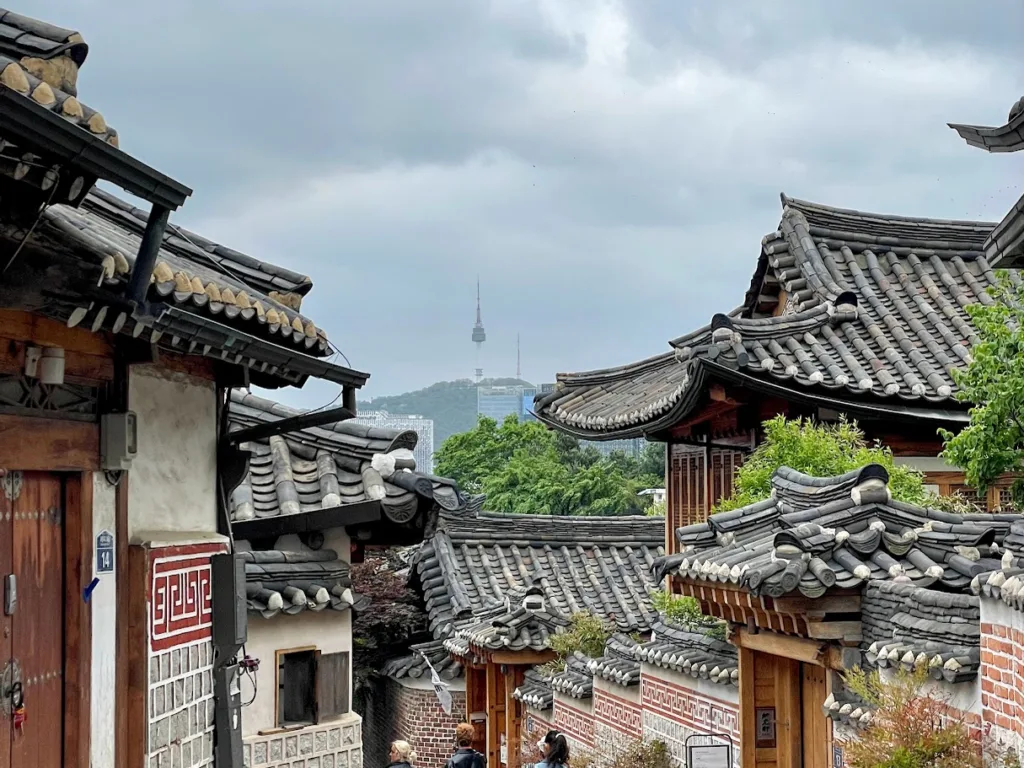
Insa-dong
Walking distance from Bukchon Hanok Village is Insa-dong, one of the most vibrant neighborhoods in Seoul. Insadong is a mix of past meets present with its traditional tea houses, award-winning restaurants, handmade gift shops, and art galleries. The best things to do in Insa-dong include:
- Shop for souvenirs at Ssamziegil, a shopping complex selling unique art, jewelry, customizable gifts, and more
- Learn about Korea’s most beloved food, kimchi, at Museum Kimchikan
- Explore Insa-dong’s many art galleries featuring Korean and international artists
- Refuel in a traditional Korean tea house
- Step into the center of Korean Buddhism at Jogyesa Temple



Ikseon-dong
Right next door to Insa-dong is Ikseon-dong, another can’t-miss Seoul neighborhood. Tiny alleys lined with souvenir shops, cafes, tea houses, and restaurants inside traditional Hanoks make up Ikseon-dong. The best things to do in Ikseon-dong include:
- Go cafe-hopping: my favorites include Cheongsudang (청수당), Nakwon Station (낙원역), Cafe Highwaist (카페 하이웨스트), and Cheese Industry (치즈인더스트리)
- Eat at one of my favorite modern Korean restaurants, Ikseon Atteut (익선애뜻)
- Eat at the best Korean vegan restaurant in Seoul, Oh Se Gae Hyang (오세계향)


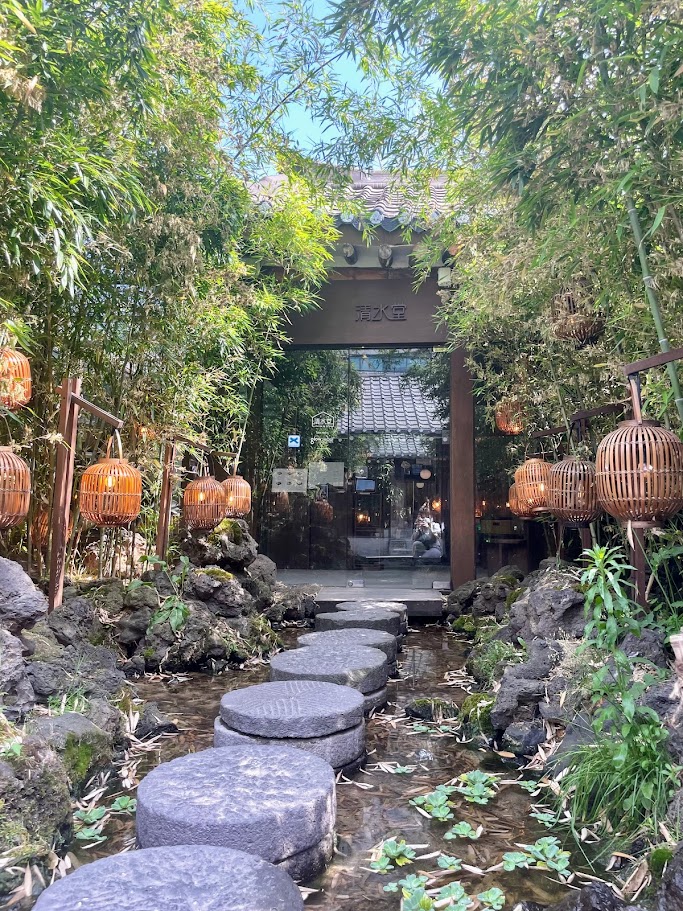
Seoul Itinerary: Day Two
Seoul City Wall Trail
Start your second day in Seoul with a stunning walk along the old city fortress walls. The Seoul City Wall was built in the Joseon Dynasty to protect the city, but now it provides some of the most scenic walks in Seoul. The wall surrounds Seoul and there are many options for routes you can take. For a moderate walk, I suggest starting at Hyehwamun Gate and ending at Heunginjimun Gate. The walk will take less than an hour and you’ll end up in the perfect area for the next stop on today’s itinerary.
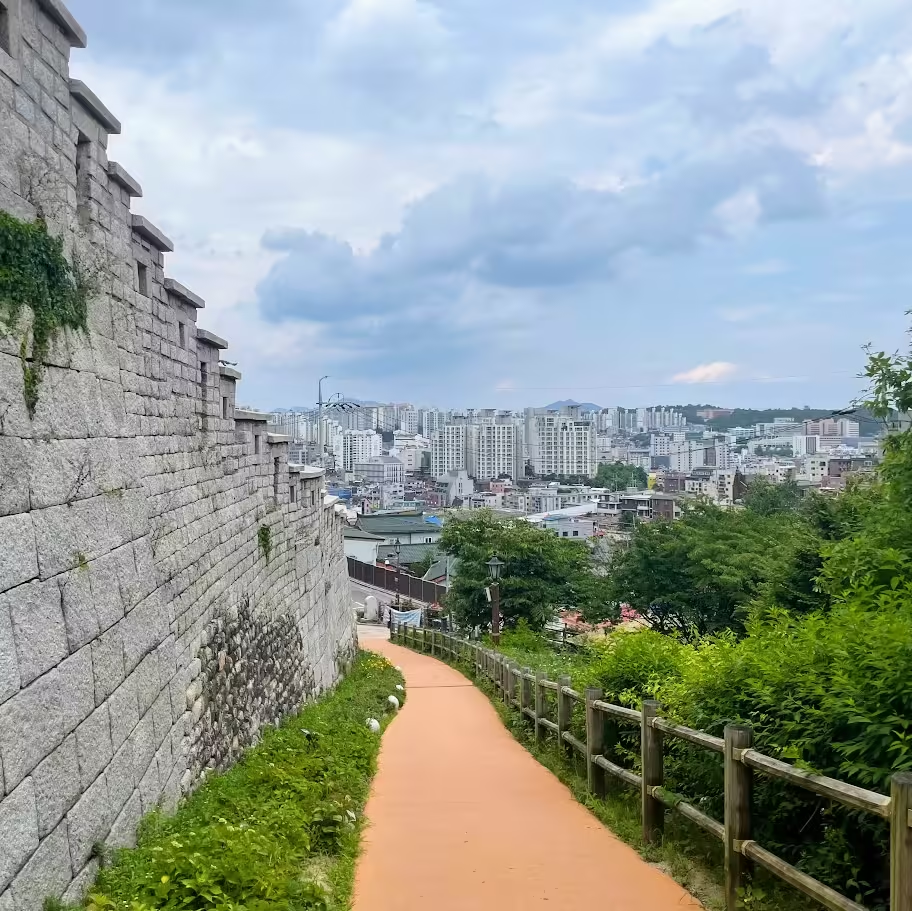
Gwangjang Market
Now that you’ve worked up an appetite from your walk, head to Gwangjang Market for street food galore! The market is one of the largest and oldest markets in South Korea, with more than 5000 shops and stalls. It’s a great place to try cheap and authentic Korean street food, such as tteokbokki, savory pancakes, kimbap, twisted donuts, and noodles. Make sure to bring cash as most vendors don’t take credit cards.
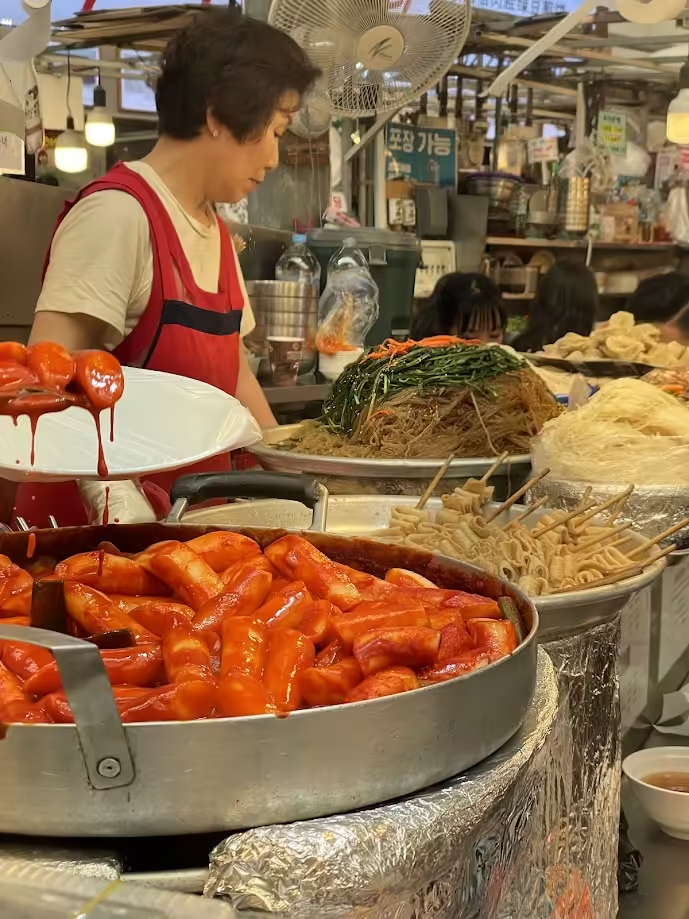
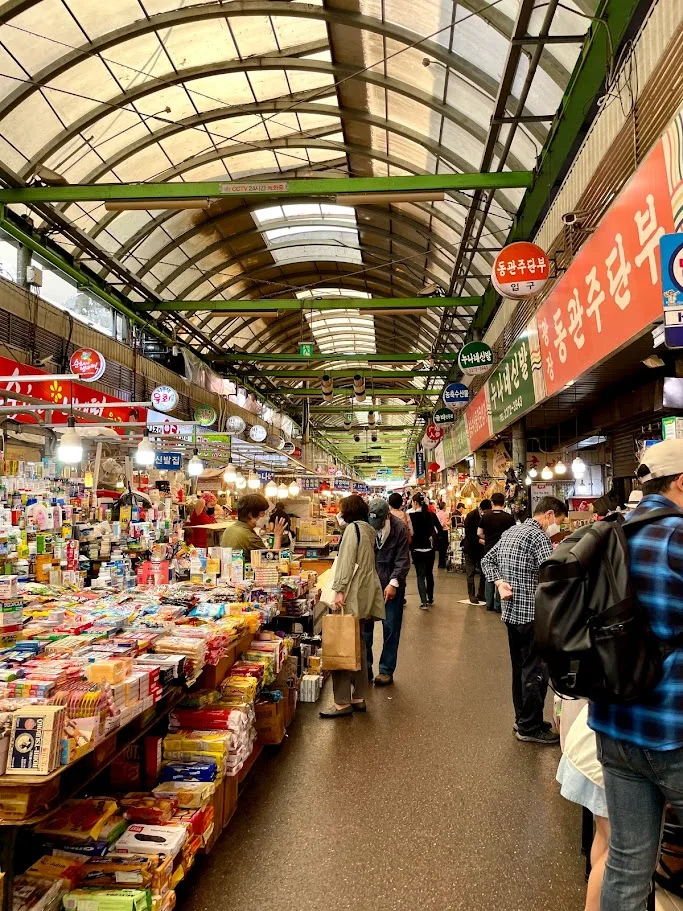
Cheonggyecheon Stream
Directly next to Gwangjang Market is Cheonggyecheon Stream, a 6.8 mi/11 km-long stream that runs through downtown Seoul. The stream is a great place to walk off your lunch while appreciating the contrast between the city and nature. Events happen at the stream throughout the year, such as lantern festivals, outdoor libraries, and more.

Want a seamless Korea itinerary tailor-made for you?
Seoul has so much to offer, but the logistics of traveling across the world are tricky. I lived in Korea for 3 years, and I create custom itineraries that help you experience the best of Korea based on your travel style, interests, budget, and more.
Let’s start planning your custom Korea trip today!
Cooking class or magkeolli brewing class
COST: ₩100,000 each, get a discount on the cooking class here
Taking a food or drink-related class is one of the best ways to get in touch with the culture you’re visiting. I’ve taken both a cooking class and magkeolli brewing class in Seoul that I highly recommend for connecting with Korean culture and creating lasting memories that you can bring home with you. If you want to cook, I loved this cooking class with a local family in their home. Before starting the class, you’ll take a market tour, learning about traditional Korean markets and trying some street food. At the end, you’ll eat an extravagant full-course meal you prepared yourself. Best of all, you can bring what you learned home to share with family and friends. There is a vegetarian option available if you contact them in advance!
If you’re more interested in alcohol brewing, then you’re in luck. Magkeolli is Korean rice wine, soju’s lesser-known (and less strong) counterpart. It’s milky, carbonated, and a little bit sweet and sour depending on the variety. At Baekusaeng Magkeolli, you can learn how to make traditional Korean magkeolli at home. You’ll also get some delicious samples brewed in-house and learn a lot about magkeolli’s past and present. I loved this class, and Joe was an awesome teacher (not sponsored!).


Hongdae
Whether you take my recommended cooking class or magkeolli brewing class, you won’t be far away from the next lively neighborhood to explore. Hongdae, named after the nearby Hongik University, is known for its fun, youthful atmosphere that especially comes alive at night. It’s Seoul’s best neighborhood for nightlife, with plenty of bars and clubs to choose from. The best things to do in Hongdae include:
- Go shopping at one of its many cheap, stylish shops
- Do karaoke at a noraebang (singing room)
- Play games at an arcade
- Experience Hongdae’s iconic nightlife at its many bars and clubs
- Check out a Harry Potter-themed cafe at 943 King’s Cross
- Go cafe-hopping in nearby Yeonnam-dong
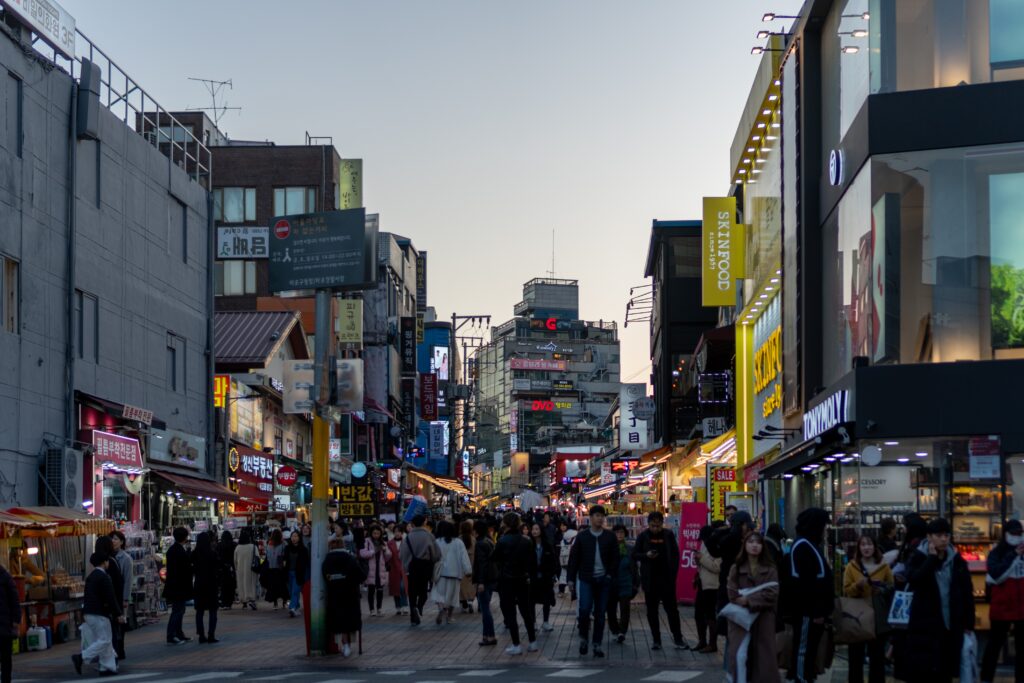
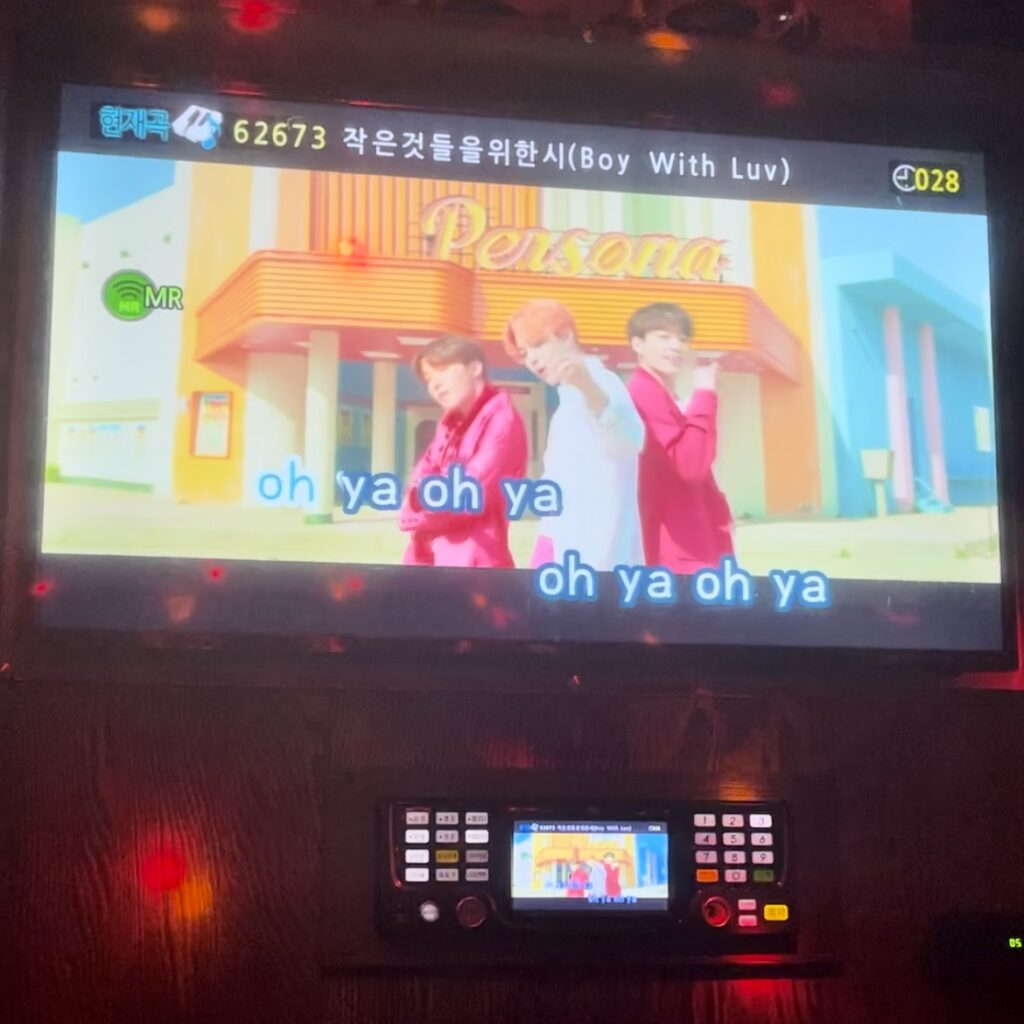
Seoul Itinerary: Day Three
DMZ Day Trip
COST: ₩73,000 for this tour (I personally did it and recommend!)
Today is dedicated to perhaps the most unique thing you can do in Seoul – visit the DMZ. The Demilitarized Zone (DMZ) is a buffer zone between North and South Korea where no military activities are allowed. A day trip to the DMZ allows you to learn about the history and politics of the two Koreas while visiting the neutral zone between them. At the end of the tour, you’ll even get to look into a North Korean village through binoculars. If you want to take it a step further (literally), you can tour the Joint Security Area (JSA), where North and South Korean troops stand beside each other on the borderline.
You must join a guided tour to visit the DMZ because of the security of the area. I recommend this tour, which I personally did and found very informative and interesting.
Currently, tours of the JSA are not running for non-Korean nationals. You can check the status of JSA tours for foreigners here.
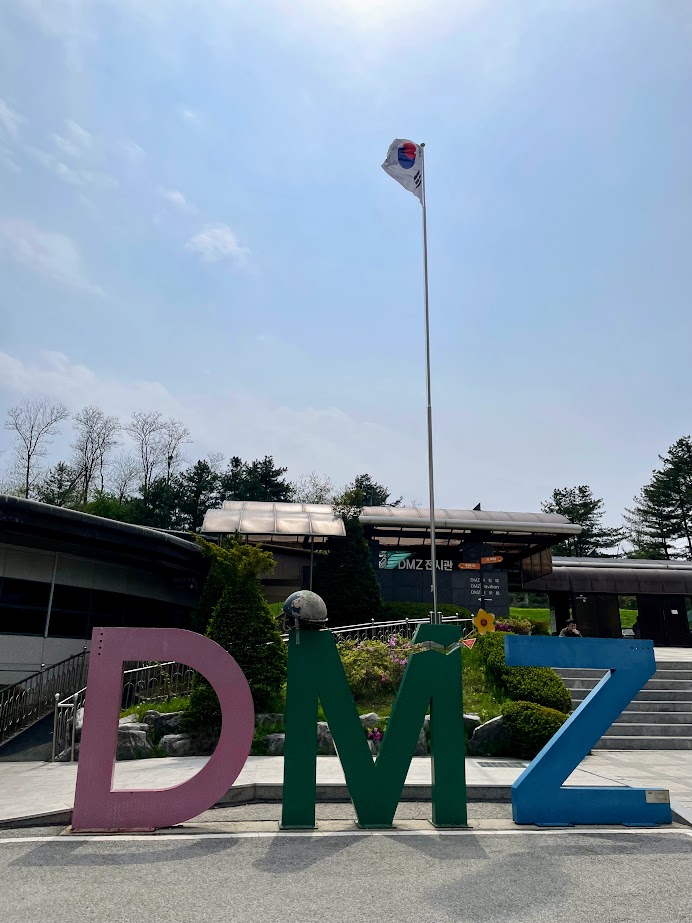
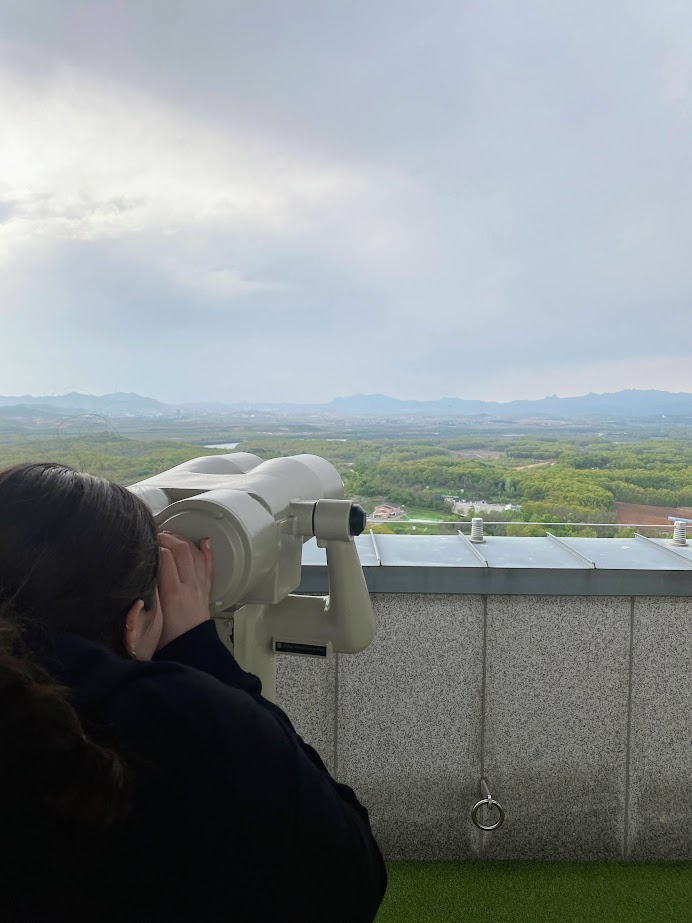
Seoul Itinerary: Day Four
National Museum of Korea or War Memorial of Korea
COST: free
You’ll start your day at the biggest museum of Korean art and history in South Korea. The National Museum of Korea is perfect for anyone interested in over 420,000 artifacts covering Korea’s past. You could easily spend a full day exploring its many galleries, programs, and exhibits, so I recommend choosing a few that interest you the most.
If you’re more interested in war history, you can visit the nearby War Memorial of Korea instead. The memorial was built to memorialize the history of the Korean War, but the museum has exhibits on the history of war in Korea from prehistoric times to the current. There are over 10,000 artifacts, including military equipment, battle records, and war vehicles, vessels, and planes.
Both museums have free entry and are good bad-weather activities. If there’s rain or extreme temperatures in the forecast during your visit, these museums are a great place to spend part of your day.
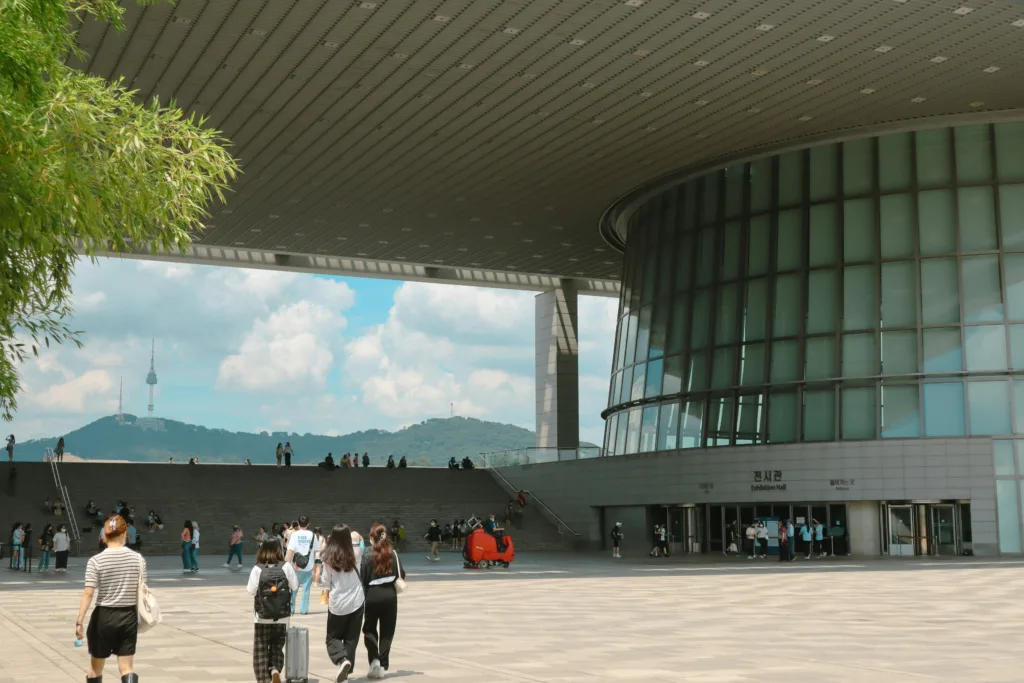

N Seoul Tower
COST: ₩21,000, get a discount ticket here
Surely by now you’ve caught views of the N Seoul Tower from afar, but now you’ll get the chance to see the views from the tower. N Seoul Tower has the best view of Seoul and is my favorite place to see cherry blossoms in the spring. You can go up to the observatory for 360° views of Seoul, or you can save money by walking around the free viewing decks at the base of the tower. There are 3 ways to get to the top: walk, take a bus, or take the cable car.
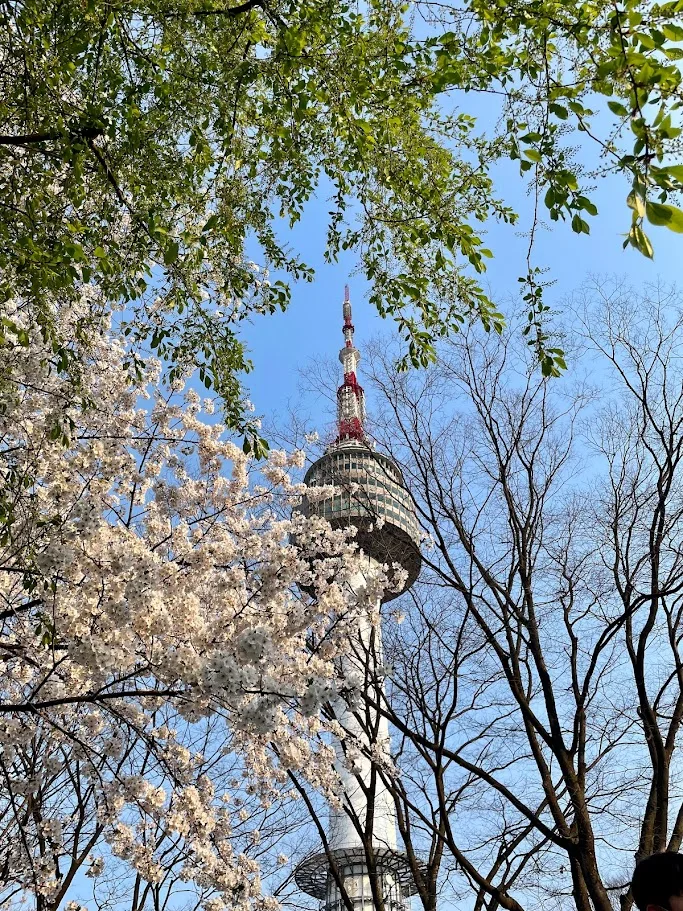


Myeongdong
Once you descend from the mountain that N Seoul Tower is on, you’ll be in the heart of Myeongdong. Myeongdong is Seoul’s most famous shopping district, with international and K-fashion brands, luxury department stores, and K-beauty shops. It comes alive at night with a street food market that lines the streets with delicious Korean and international food stalls. Don’t forget to bring your passport for duty-free shopping!
Myeongdong is exciting, foreigner-friendly, and in a great location, making it my top recommended place to stay in Seoul. Check out my local’s guide to where to stay in Seoul for more information.
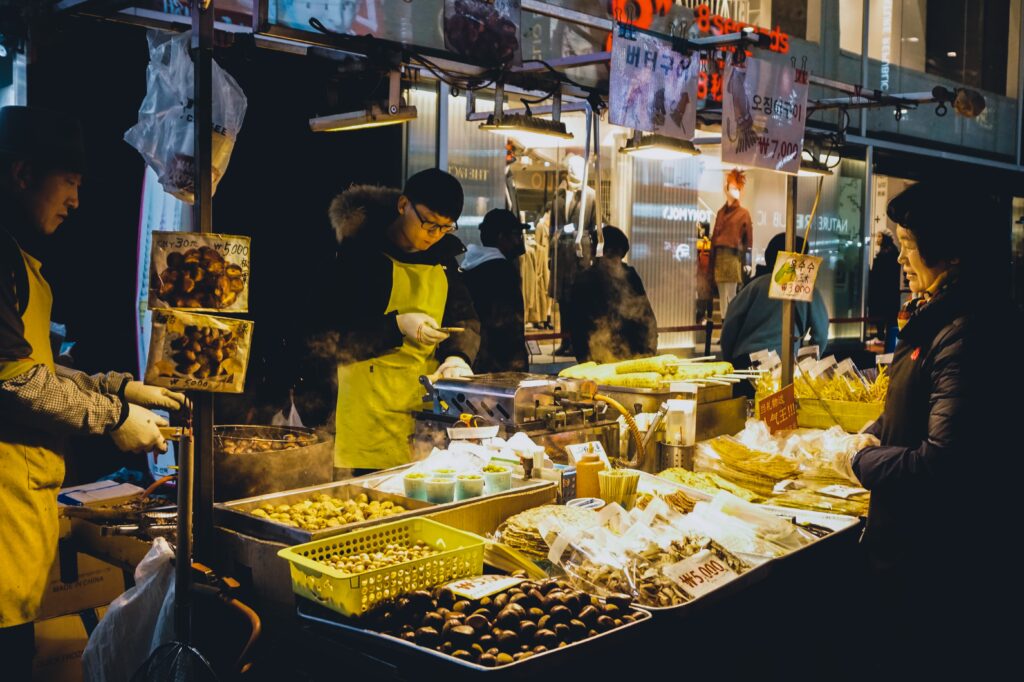

Euljiro
You’ll end your day in an up-and-coming local gem that many tourists don’t know about yet. Sometimes called “Hipjiro” because of its hip vibes, Euljiro has a flourishing food and drink scene among small alleyways lit with neon signs. There are breweries, bars, and restaurants where you can eat and drink amongst locals. Euljiro Nogari Alley is famous for its pubs where locals fill the streets at plastic tables, drinking beer and eating pub food. So grab some “somaek” (soju + beer) and cheers to a great day.
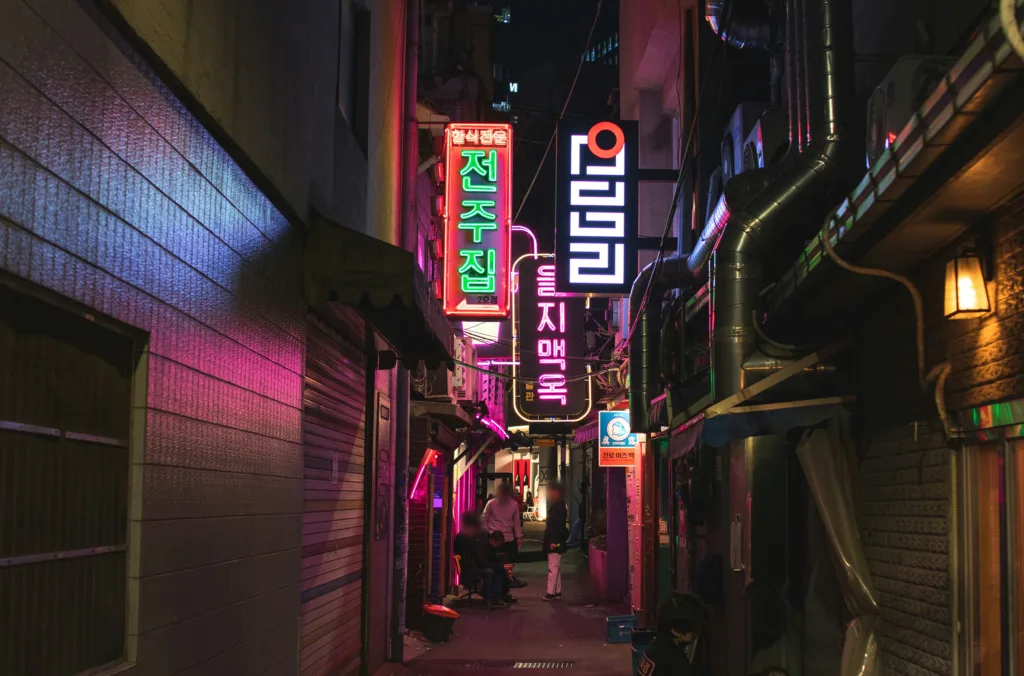
Seoul Itinerary: Day Five
Bongeunsa Temple
COST: free
Start your day at Bongeunsa Temple, my favorite temple in Seoul. This beautiful Buddhist temple is a zen escape from the bustling city. Located in the center of Gangnam, it’s a stark contrast to the skyscrapers, malls, and crowds of people around it. The 23 m./75 ft. Maitreya Buddha statue looks over the cityscape, and you can see some great views of the city if you walk on the trail around the complex. If you’re lucky enough to visit during Buddha’s Birthday around May, the complex will be lit up by colorful lanterns.



COEX Mall
Honestly, COEX Mall is a tourist destination that I don’t think lives up to the hype. While it’s often listed as one of the best things to do in Seoul because of its aesthetic Starfield Library, I don’t think it’s worth going out of your way for unless you love shopping. However, it’s directly across from Bongeunsa Temple, so it’s worth stopping in if you’re at the temple and you have time. If you make the stop, be sure to get the Instagram-worthy shot of the Starfield Library. You can also see the famous Gangnam Style bronze hands sculpture.
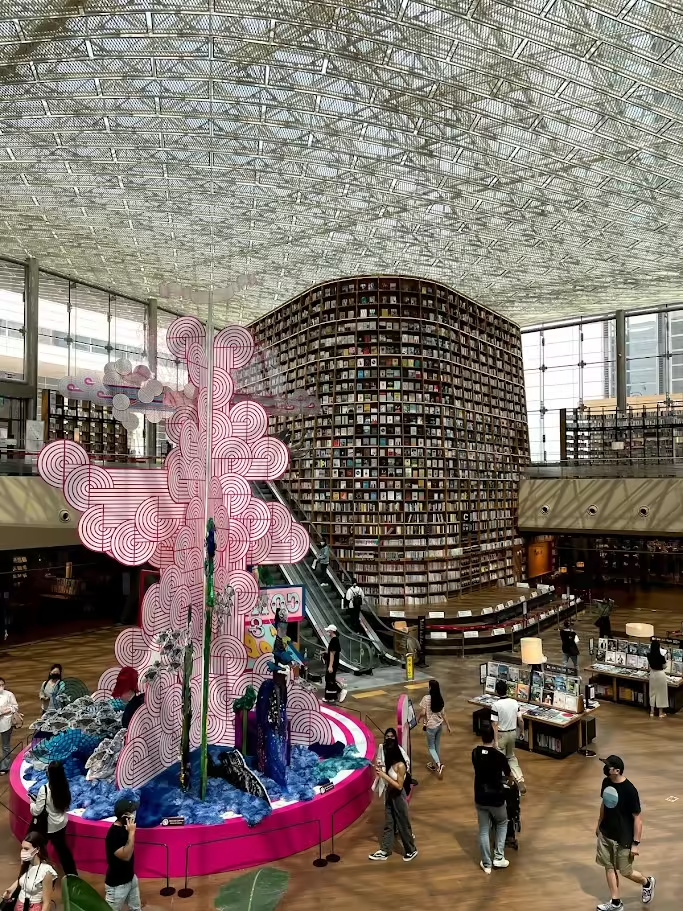

Seoul Forest
Next, head right across the Han River to Seoul Forest. Although the name is misleading and it’s more of a park than a forest, Seoul Forest is the perfect place to spend an afternoon when the weather is nice. You can have a picnic or take a walk or bike ride around the sprawling grounds. Its most famous sites are the Gingko Tree Forest in the fall, cherry blossoms in the spring, and the Deer Corral where you can feed deer. Don’t miss the Seoul Forest Cafe Street located at Gate 4/5 for some trendy cafes and popular restaurants.

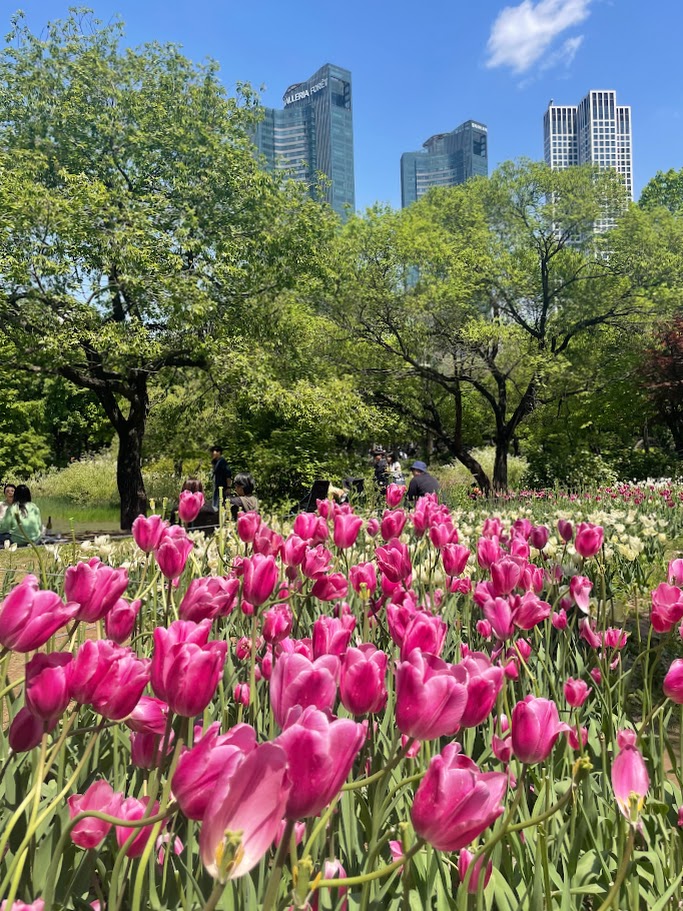
Seongsu
You’ll spend the afternoon in one of Seoul’s trendiest neighborhoods, Seongsu. Known as “the Brooklyn of Seoul” because of its cool warehouse vibes, there are countless shops, restaurants, and cafes to explore. It’s the hot spot for pop-up shops, which have taken Korea by storm. From beauty and lifestyle to fashion and food, you’ll find endless pop-up shops in Seongsu each week offering discounts, free gifts, photo ops, and more.
The best things to do in Seongsu include:
- Check out the many constantly-rotating pop-ups
- Go cafe-hopping: my favorites include Seoul Angmusae (서울앵무새), Rain Report (레인리포트), and Cafe Onion (카페 어니언)
- Shop in shipping containers at Common Ground


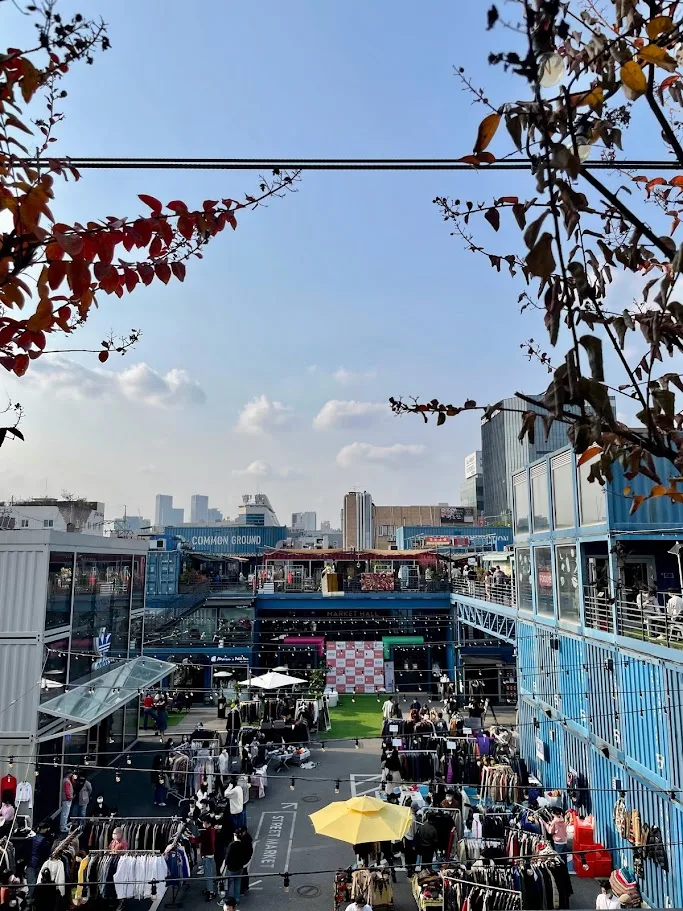
Tteukseom Hangang Park
Finally, end your day with a picnic at the Han River. Tteukseom Hangang Park is the perfect place for a picnic because it’s next to Seongsu and less crowded than some of the other Hangang parks. The signature thing to order is “chimaek”, Korean fried chicken and beer. If you like biking, running, or walking, the trail along the Han River is pleasant.
Seoul Itinerary: Days Six – Seven
Day Trips
If you’re lucky enough to have a full week in Seoul, you can’t pass up the opportunity to venture out of the city and see more of what Korea has to offer. Korea is so small and transportation is so good that there are many worthwhile day trips close to Seoul, most just 1-2 hours away. No matter your interests, there are day trips from Seoul for nature lovers, history buffs, culture enthusiasts, beach bums, and more.
Don’t know where to go? Check out my list of the top 15 day trips from Seoul, organized by interest to find the best place to spend your day.
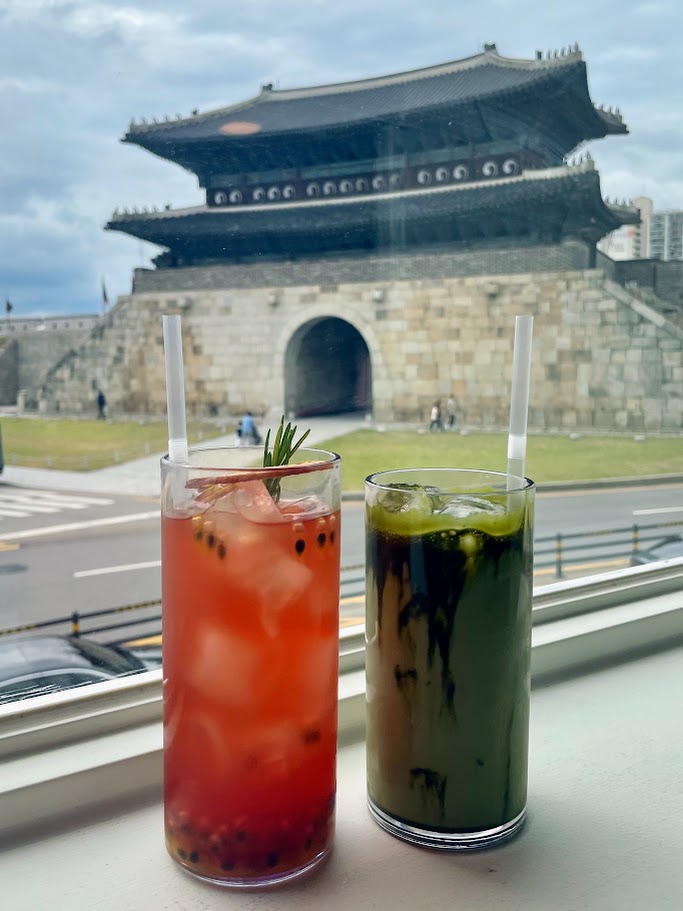

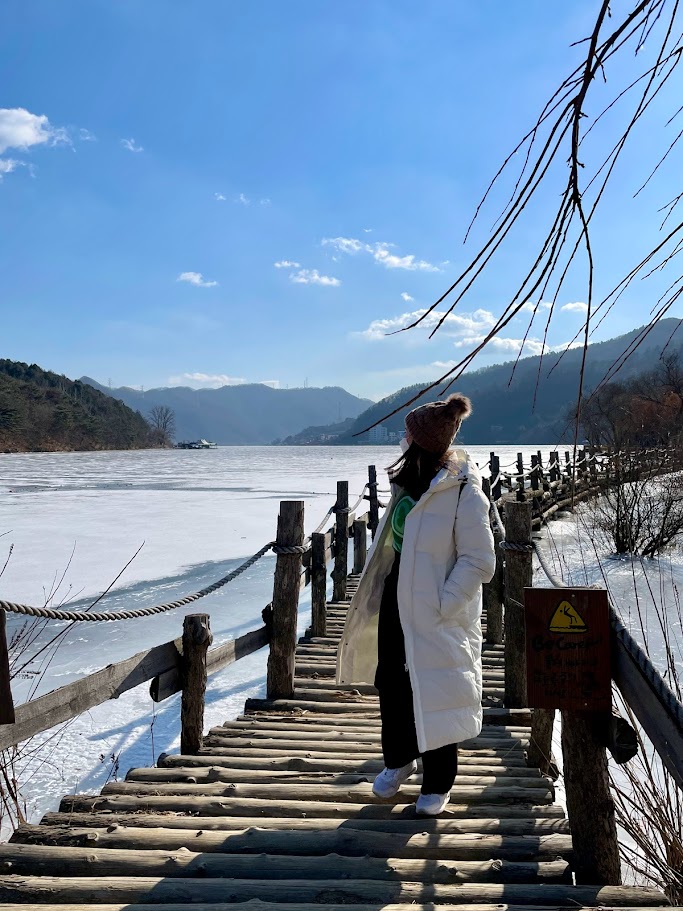
I hope this Seoul itinerary helps you discover its unique big-city charm, whether you’re here for a week or just a few days. From exploring ancient palaces and world-class museums to cafe-hopping and scenic walks, Seoul has something for everyone. Why not continue your South Korean adventure in Busan, Gyeongju, and Jeju with my 2-week Korea itinerary?
Keep reading:
- 20 best things to do in Seoul, South Korea
- 15 unique things to do in Seoul: An unreplicable bucket list
- 2 week South Korea itinerary & travel guide from a local
- South Korea Solo Travel Guide: Safety, tips, & what to expect
- 15 BEST day trips from Seoul
- Busan itinerary: 2, 3, or 4 days in South Korea’s coastal gem
- What to know before going to South Korea: 33 tips from a local
- The 22 best cafes in Seoul
- Where to stay in Seoul, South Korea: A local’s guide
- South Korea packing list: A local’s guide to what to pack
- Top 9 things to do in Gyeongju, South Korea & 2-day itinerary
- Best things to do in Jeonju, South Korea
- 25 unmissable things to do in Korea in winter
- 31 unmissable things to do in spring in Korea
- 22 best things to do in summer in Korea
- Fall in Korea: The 26 best things to do
- The best vegetarian and vegan restaurants in Seoul
- Best places to solo travel in Asia as a woman

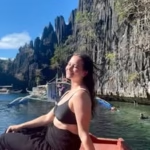


Leave a Reply